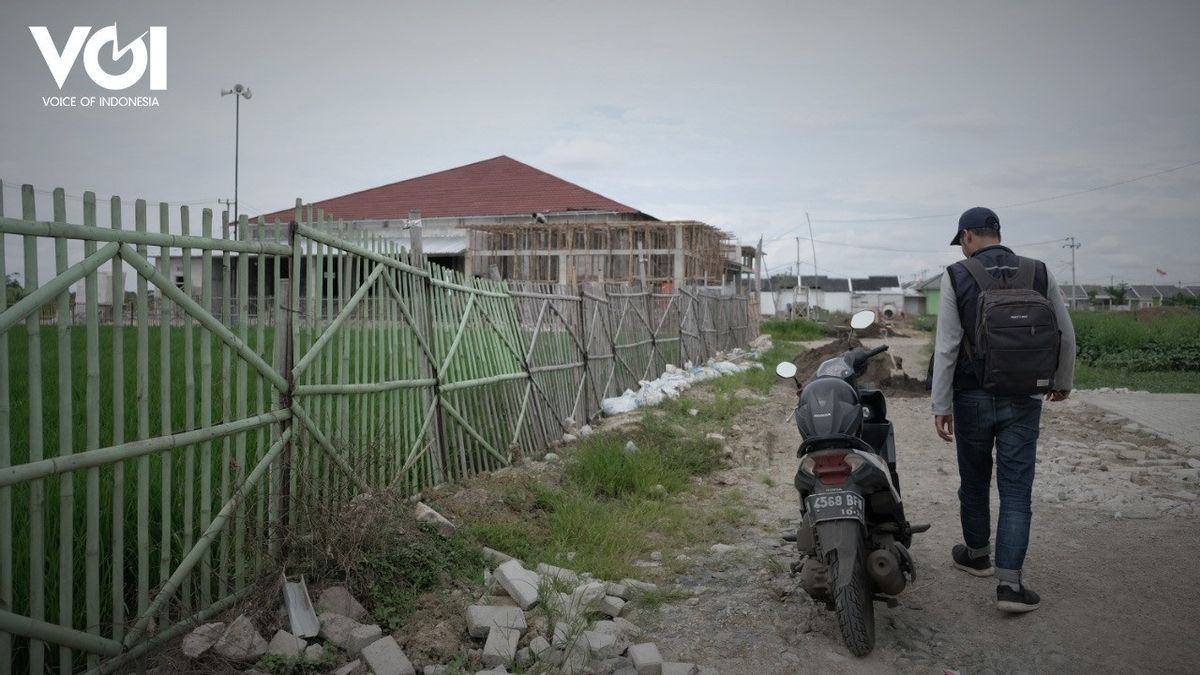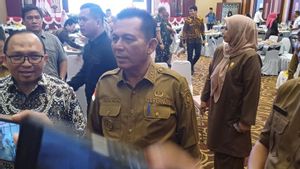The article "Questioning the Stigma 'We Are Where Our Homes Stand'" has discussed stigmatization of how a person is viewed from the area in which he lives. Part of the typical VOI Writing Series, "When Was the Board Established?". In this article, we will look at Jakarta's magnetism in the property industry. About us who live in the suburbs, who every day have to be willing to travel for hours to earn a living in the capital
Arie Noorhadi came with a radiant face. Her handshake tightly, her voice loud. He was still the last person to appear when we crowded together at the Aceh noodle shop opposite the Pancasila University campus, Lenteng Agung, South Jakarta. However, her body language didn't lie. There was a big change in his life. Arie has just started a new life: moving offices.
The moment was clearly visible in the memory. Arie told me many things. Although what we remember the most is how his life is no longer running out on the road. Arie's house in Laladon, Ciomas, Bogor, West Java. Before moving to a coffee shop in Margonda, Depok, Barista Arie had to travel two hours by motorbike to Grand Indonesia, Thamrin, Central Jakarta, every day.
Being out on the road is not Arie's problem alone. Gita Rachma also experienced. Every day, Gita spends almost five hours commuting to work. He traveled from his house in Bojong Gede, Bogor, West Java to his office in Rawa Buaya, Tangerang, he took the commuter line. Gita is very tired, actually. However, boarding is not an option. Even to change jobs, it's a shame.
"Every day I also think about (changing jobs). But, I'm already in good position here," said Gita via text message, Friday, February 7.

Spatial planning observer, Nirwono Yoga expressed his point of view on this issue. According to him, life is running out on the path that Arie, Gita, and many of us have all been due to the government's failure to realize an equitable development of civilization. Jakarta is too dazzled, as if it is the only place people make money. This is related to the stretching of the property industry.
According to Nirwono, naturally, the property industry follows civilization. In simple language, mass construction of housing projects will only be carried out in locations close to Jakarta. The patterns are intertwined in a dead knot. It will not be broken down until civilization - offices, industry and employment - is available evenly in all regions.
"Equitable housing development in Jabodetabek has not materialized. Only the rich and the very rich can live properly in and in the center of Jakarta. Meanwhile, the middle and upper class are forced to live in the suburbs and leave to neighboring cities," said Nirwono when contacted by VOI, some time ago.
Honestly, it's not easy to fix this problem. According to Nirwono, the government at various levels, from regional to central, must work together strongly to produce solutions. If equalization of civilization is too difficult to do, at least, as a short-term solution, state officials must ensure that housing prices remain affordable by building vertical housing. It's nothing, today, the difference in land prices between one region and another is very unequal.
"The right solution for the government to this problem is that the DKI and central government must build vertical housing in the form of flat for low-income families, flats for workers, students, or young families. Apartments for the upper middle class. Those in an integrated area," said Nirwono.
Dazzling since Batavia
The glorious glare of Jakarta is not recent. Since Batavia, the Capital City has had an attraction that extends far beyond other cities and regions. The arrival of the Dutch fleet led by Cornelis de Houtman on November 13, 1596 was the beginning. At that time, the capital was still called Jacatra, known as a small city located in the northwest of Java Island. Since then many Dutch ships have docked at the port called Sunda Kelapa.
Seeing this stretch, the Governor General of the Dutch East Indies Jan Pieterzoon Coen drew up a plan to take control of Jacatra. His efforts were only successful on May 30, 1619. Hence, Jacatra was changed to Batavia. He made the city a meeting place for Dutch ships, which slowly but surely made it the center of activity for the Dutch trading partnership, Vereenigde Oostindische Compagnie (VOC).
Historian JJ Rizal described this condition to VOI some time ago. According to him, trading activities raised the name Jakarta to be very famous in international relations at that time. JJ Rizal complements, the conquest of Jayakarta - which was followed by trade - became one of the important moments for the Netherlands to build global connections.
At that time, Batavia was used as a spice business field. Others make Jakarta a transit point to replenish food supplies. "From here (the conquest of Jayakarta), its position (Jakarta) as the capital of the Netherlands has made the city nicknamed" The Queen of East "a city where various ethnic groups breed," said JJ Rizal.

In the early years the Dutch still inhabited the Kota Tua area, they dreamed of building a house by the canal. The canal-side dwelling, however, is a remedy for their longing for their country of origin. Over time, in the 1920s, the Dutch colonial government began to use a hundred hectares of land in Menteng to become a prestigious residence.
Zeffri Hendrik, in a book entitled "Jakarta Has a Way", recounts: Houses in the area varied, from the largest to the smallest. The story he wrote in one of the stories entitled Housing Phenomena in Batavia and Jakarta. After Indonesia's independence, the government's ambition to build housing grew more intense. Housing establishments come first.
They adopted the method of the Dutch East Indies colonial government, which had previously built housing for its employees in Menteng. Not only in Central Jakarta. This ambition extends to other Jakarta areas. "The need for land for their housing, especially in the Jakarta area, has penetrated into various areas outside the Central Jakarta area. Most houses of this type of institution are located in West Jakarta and South Jakarta. In that area, there are 15 departments that provide housing lots built in Kebayoran Baru, ”said Zeffri Hendrik.
Along with the times, house construction is no longer carried out by the government alone. It started in the 1970s. At that time, the Jakarta City Government began to open up and allow the private sector to open residential land in various areas that were deemed to be developing as an alternative to solving the problem of population density.
For example, a development project in the Tomang area which is known for its muddy land but is in demand so housing is made. The Cempaka Putih area, which used to be a rice field, was turned into a housing complex, the Pluit area which borders the coastal area as well. As well as penetrating other areas in Jakarta.
In fact, because they could not accommodate all the immigrants who kept coming to the capital, housing in the suburbs of Jakarta was also developed, such as Bintaro, Ciputat, Pamulang, Bekasi and Depok. As a result, to this day most people occupy these areas as an option to own a house.
Next article: "All Guidelines for Young Generation to Realize the Dream of Buying a Home"
The English, Chinese, Japanese, Arabic, and French versions are automatically generated by the AI. So there may still be inaccuracies in translating, please always see Indonesian as our main language. (system supported by DigitalSiber.id)












